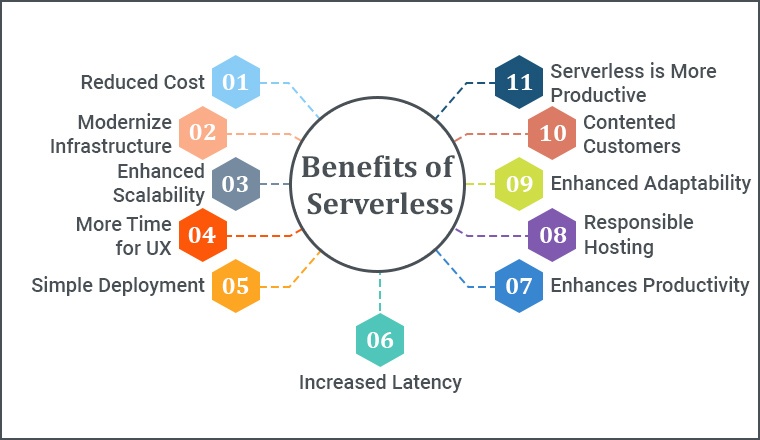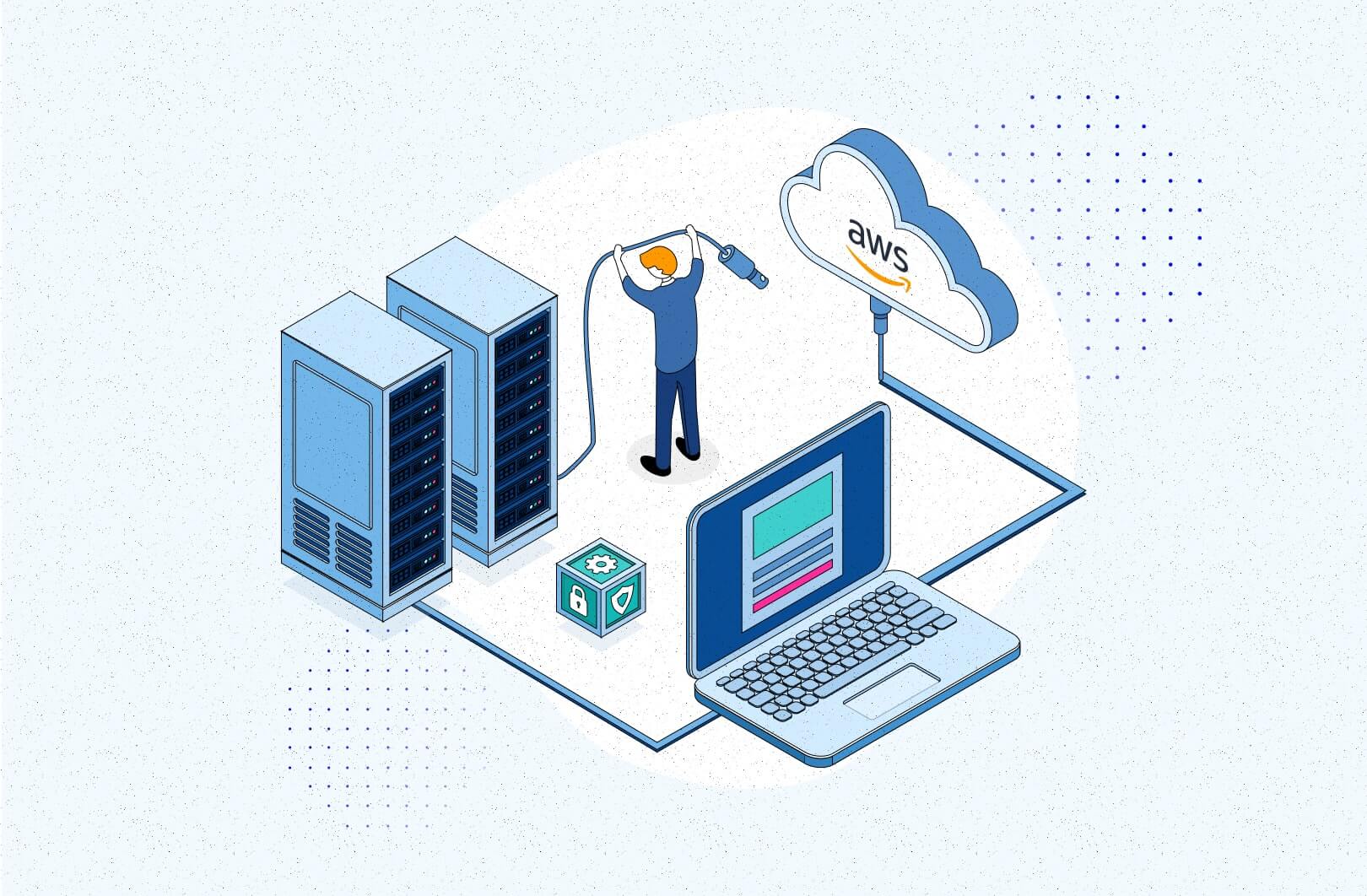An Overview of Serverless Computing
Serverless computing is a modern approach to application development that abstracts infrastructure management, allowing developers to focus on writing code and delivering value to users. By eliminating the need to manage servers, this paradigm significantly reduces infrastructure costs and simplifies maintenance. Moreover, serverless architecture automatically scales resources based on demand, ensuring smooth performance during traffic spikes.

Key Players in Serverless Computing
Serverless computing has gained popularity due to the rise of managed services that simplify application development and maintenance. Some leading platforms in this space include:
- AWS Lambda: Amazon Web Services (AWS) Lambda is a versatile serverless platform that supports multiple languages and integrates seamlessly with other AWS services. It is suitable for a wide range of use cases, such as web applications, data processing, and IoT backends.
- Google Cloud Functions: Google Cloud Functions is a lightweight serverless platform that allows developers to write code in JavaScript or Python. It is an excellent choice for event-driven applications, real-time data processing, and IoT projects.
- Microsoft Azure Functions: Azure Functions is a flexible serverless platform that supports multiple languages, including C#, F#, Java, JavaScript, and Python. It is well-suited for building event-driven applications, web APIs, and real-time data processing systems.
These platforms offer automatic scaling, simplified maintenance, and reduced infrastructure costs, making them ideal for building scalable applications using serverless computing.

How Serverless Computing Enhances Scalability
One of the primary advantages of serverless computing for scalable applications is its ability to automatically adjust resources based on demand. This elasticity ensures smooth performance during traffic spikes, allowing applications to scale seamlessly without requiring manual intervention.
In traditional monolithic architectures, scaling an application often involves adding or removing entire servers, which can be time-consuming and resource-intensive. Serverless computing, on the other hand, allows developers to create stateless functions that can be executed independently, enabling fine-grained scaling at the function level.
An event-driven architecture is crucial for building scalable applications using serverless computing. In this approach, functions are triggered by specific events, such as HTTP requests, database updates, or message queue notifications. By decoupling functions from one another, event-driven architectures promote loose coupling and high cohesion, making it easier to scale individual components as needed.
Efficient data management is another essential aspect of designing scalable applications with serverless computing. Since serverless platforms typically charge based on function execution time and resources consumed, it is crucial to minimize data access latency and optimize data storage strategies. Techniques such as caching, data partitioning, and using managed databases can help improve performance and reduce costs.

Real-World Applications of Serverless Computing
Serverless computing has been successfully implemented in various industries, demonstrating its potential for enhancing scalability and cost-effectiveness. Some notable examples include:
- Media and Entertainment: Streaming platforms like Netflix and Spotify leverage serverless computing to handle spikes in user demand and ensure seamless content delivery. By using event-driven architectures, these companies can scale individual components, such as video transcoding or recommendation engines, independently.
- Finance: Financial institutions use serverless computing for real-time data processing, fraud detection, and regulatory compliance. For instance, Capital One has adopted a serverless-first approach, utilizing AWS Lambda to process millions of transactions daily while maintaining high security and compliance standards.
- Healthcare: Healthcare providers and insurance companies leverage serverless computing for data processing, analytics, and AI-powered applications. For example, a healthcare provider could use serverless functions to process and analyze medical images, improving diagnostic accuracy and patient outcomes.
These examples illustrate the versatility and scalability of serverless computing across various industries. By adopting serverless architecture, organizations can benefit from reduced infrastructure costs, automatic scaling, and simplified maintenance, ultimately leading to more efficient and competitive applications.

Designing Scalable Applications with Serverless Computing
To design scalable applications using serverless computing, developers should consider the following best practices and tips:
- Event-driven architecture: Embrace an event-driven approach, where components react to specific events or triggers, such as user actions or system notifications. This design pattern enables efficient resource utilization and seamless scaling.
- Stateless functions: Ensure that serverless functions are stateless, meaning they do not store data between executions. Stateless functions can be easily scaled horizontally, as they do not rely on shared resources or states. This approach also simplifies application maintenance and debugging.
- Efficient data management: Implement efficient data management strategies, such as caching, data partitioning, and event sourcing. These techniques can help minimize latency, reduce costs, and ensure smooth performance during traffic spikes.
- Monitoring and logging: Implement robust monitoring and logging mechanisms to track performance, detect issues, and optimize resource allocation. Tools like AWS CloudWatch, Google Cloud Monitoring, and Microsoft Azure Monitor can help developers identify bottlenecks and fine-tune their serverless applications.
- API design: Design APIs with scalability in mind, using techniques such as rate limiting, caching, and pagination. These strategies can help manage traffic, reduce latency, and improve overall user experience.
By following these best practices, developers can create scalable and cost-effective applications using serverless computing. However, it is essential to consider potential challenges and limitations, such as cold start latency, vendor lock-in, and monitoring complexities, and develop strategies to mitigate them.

Challenges and Limitations of Serverless Computing
While serverless computing offers numerous benefits for building scalable applications, it is essential to consider potential challenges and limitations:
- Cold start latency: Serverless functions may experience increased latency when invoked after a period of inactivity, as the platform needs to initialize the function’s environment. Developers can mitigate this issue by employing strategies such as keeping functions warm, using function warm-up plugins, and optimizing function initialization time.
- Vendor lock-in: Adopting a specific serverless platform may lead to vendor lock-in, making it challenging to migrate to alternative providers. Developers can minimize this risk by using platform-agnostic tools and architectures, standardizing interfaces, and adhering to open standards.
- Monitoring complexities: Serverless architectures can introduce additional monitoring and debugging complexities due to the distributed nature of the components. Implementing robust monitoring and logging mechanisms, such as AWS CloudWatch, Google Cloud Monitoring, and Microsoft Azure Monitor, can help developers identify bottlenecks and optimize their serverless applications.
- Security concerns: Serverless computing introduces new security considerations, such as managing permissions, handling secrets, and ensuring data privacy. Developers should follow best practices for securing serverless applications, such as implementing least privilege access, encrypting sensitive data, and regularly reviewing security configurations.
- Cost management: Serverless computing’s pay-per-use model can lead to unexpected costs if not managed properly. Developers should monitor usage patterns, set budget alerts, and optimize resource allocation to ensure cost-effective serverless applications.
By understanding and addressing these challenges, developers can build robust and scalable applications using serverless computing while minimizing potential issues and limitations.
The Future of Serverless Computing
Serverless computing has significantly impacted modern application development, enabling developers to build scalable and cost-effective applications with ease. As the technology continues to evolve, we can expect several emerging trends and technologies to shape the serverless landscape:
- Advancements in Function-as-a-Service (FaaS): FaaS platforms will continue to mature, offering improved performance, increased scalability, and enhanced security features. New features, such as support for additional programming languages and runtime environments, will expand the use cases for serverless computing.
- Integration with edge computing: Edge computing and serverless architectures will converge, allowing developers to process data closer to the source and reduce latency. This integration will enable new use cases in IoT, real-time analytics, and content delivery networks.
- Serverless containerization: The use of containers in serverless computing will grow, providing developers with more control over the runtime environment and enabling seamless migration between cloud providers. Container orchestration tools, such as Kubernetes, will play a crucial role in managing and scaling containerized serverless applications.
- Artificial intelligence and machine learning integration: AI and ML services will become more integrated with serverless platforms, allowing developers to build intelligent applications without managing complex infrastructure. This integration will lead to the development of new serverless ML frameworks and tools for training and deploying machine learning models.
- Increased focus on observability: As serverless architectures become more complex, there will be a growing need for robust monitoring, tracing, and logging tools. These tools will help developers identify and resolve performance issues, optimize resource utilization, and ensure the security and compliance of serverless applications.
By embracing these trends and technologies, developers can harness the full potential of serverless computing for scalable applications and unlock new possibilities for innovation and growth. The future of serverless computing is bright, and it will continue to play a pivotal role in shaping the application development landscape for years to come.
Conclusion: Embracing Serverless Computing for Scalable Applications
Serverless computing has emerged as a powerful and transformative force in modern application development. By harnessing the benefits of reduced infrastructure costs, automatic scaling, and simplified maintenance, developers can create scalable and cost-effective applications with ease. The relevance of serverless computing for scalable applications is undeniable, as it enables organizations to focus on their core business functions while relying on third-party providers for infrastructure management.
Popular serverless computing platforms, such as AWS Lambda, Google Cloud Functions, and Microsoft Azure Functions, offer a wide range of features and use cases tailored to various industries. By understanding the potential issues and limitations, such as cold start latency, vendor lock-in, and monitoring complexities, developers can implement strategies to mitigate these challenges and ensure successful serverless application development.
As the serverless landscape continues to evolve, emerging trends and technologies, such as advancements in Function-as-a-Service, integration with edge computing, serverless containerization, AI and ML integration, and increased focus on observability, will shape the future of serverless computing. By embracing these innovations and best practices, developers can unlock new possibilities for scalable applications and drive growth in the ever-changing world of application development.
In conclusion, serverless computing for scalable applications offers a myriad of benefits and opportunities for developers and organizations alike. By exploring the potential of serverless architecture, developers can create applications that not only meet the demands of today’s users but also adapt to the challenges and opportunities of tomorrow.

